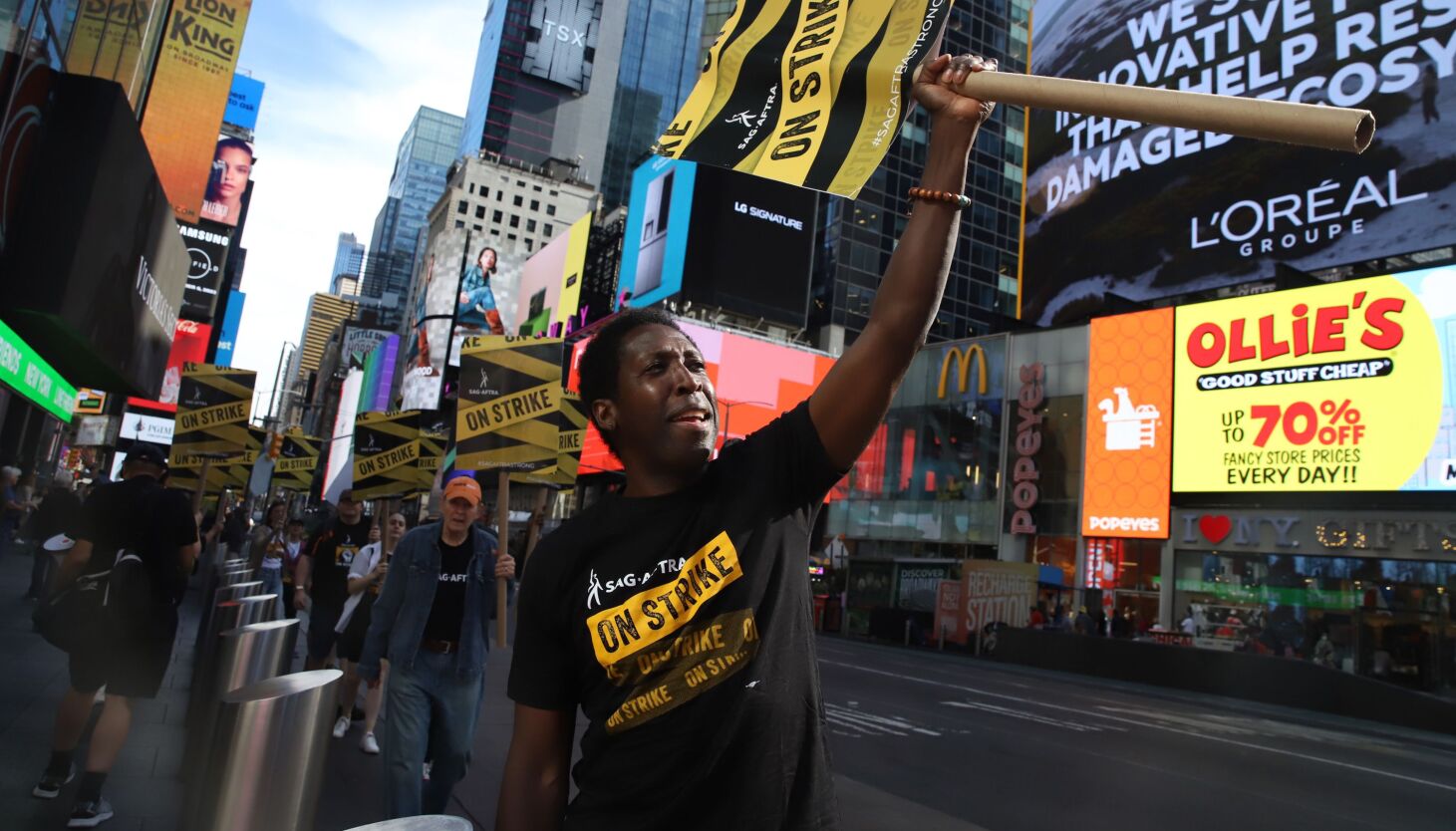Here is your September economic recovery update from THE CITY. We publish a new analysis of the city’s employment, job and fiscal indicators each month.
Strike Sends Movie and TV Jobs Plunging
The New York City economy has stalled in large part because of the fallout from the strike that has shut down the city’s key movie and TV production sector.
While writers went on strike in May, the industry wasn’t paralyzed until the actors joined the picket lines in July. Movie and TV production jobs fell to 39,700 in August compared with about 53,000 before the strike began, according to data released Thursday by the state Department of Labor.
As a result, the city’s job gains have slowed to a crawl. The city overall added only 2,000 jobs in August, according to the labor department’s seasonally adjusted data. Employment remains stuck at 40,000 jobs below the pre-pandemic level, about where it has been for several months.
One twist: while the film and TV sector accounts for as many as 180,000 jobs, fewer than 8,000 workers affected by the strike are collecting unemployment benefits. Economists suggest that given the episodic nature of film and TV work, many in the industry hold second jobs, which give them some income and make them ineligible for benefits.
Unemployment Rate Unchanged
The city’s unemployment rate was unchanged in August, at 5.3%. It remains much higher than the national rate, which was 3.8%.
Measuring Poverty
The poverty rate in New York City remained virtually unchanged in 2022 at 18.3%, according to data released Thursday by the U.S. Census Bureau — but that figure ignores a sharp decline in the ability of low-income New Yorkers to get by.
The poverty rate released Thursday is a measure of before tax-income derived from the Census Bureau’s American Community Survey. A more sophisticated national survey also released last week by the Census Bureau, and taken from other data sources, factors in government assistance programs and regional differences in the cost of living, revealed the national poverty rate soared to 12.4% from 7.8% in 2021—the largest increase in record.
The child poverty rate more than doubled from a record low of 5.2% largely because of the expiration of an expanded child tax credit enacted as part of the last pandemic aid legislation under President Joe Biden.
A New York City poverty tracker from Columbia University and the Robin Hood Foundation that emulates the more sophisticated national measure said 18% of New York households were in poverty in 2021, a figure that held steady despite the impact of the pandemic recession on low-wage workers. It is expected to rise sharply when Columbia and Robin Hood release 2022 data early next year because of the loss of the pandemic aid.
“The key takeaways are that policy matters and policy makers can make the choice to reduce poverty. If we want to reduce poverty, we should have a meaningful child tax credit for the lowest income families,” said Matt Klein, chief program and impact officer at Robin Hood.
Key Week Looms for Office Occupancy
Office occupancy in the New York area increased to 42.5% for the week that ended on Wednesday, Sept. 6. But those numbers likely reflect the tail end of summer vacations, with New York City schools not reopening until later that week. Next week’s data from Kastle Systems, which tracks keycard entry in office buildings, will show whether anecdotal reports of employers’ tougher attendance rules will result in a surge in occupancy in the fall.




